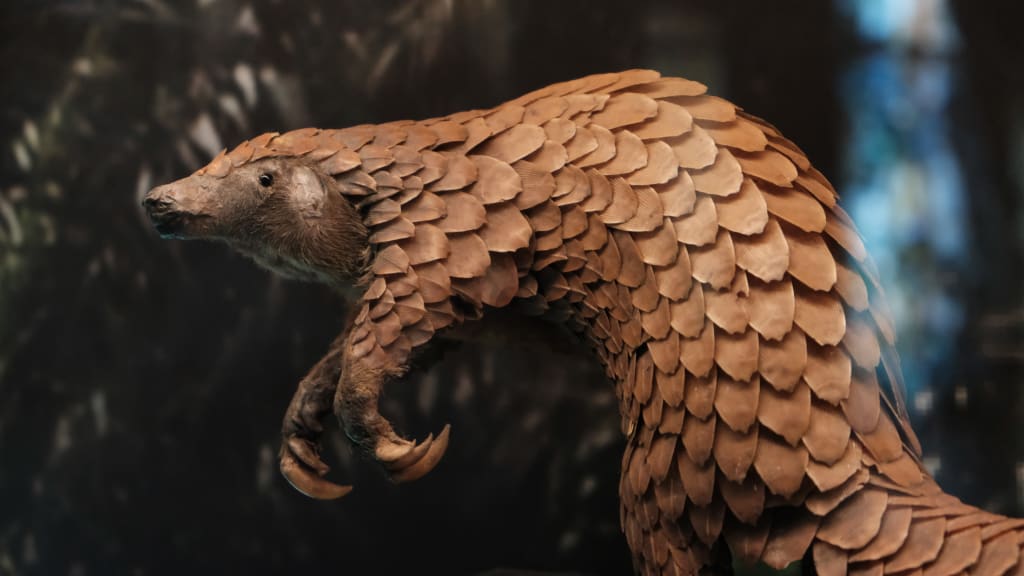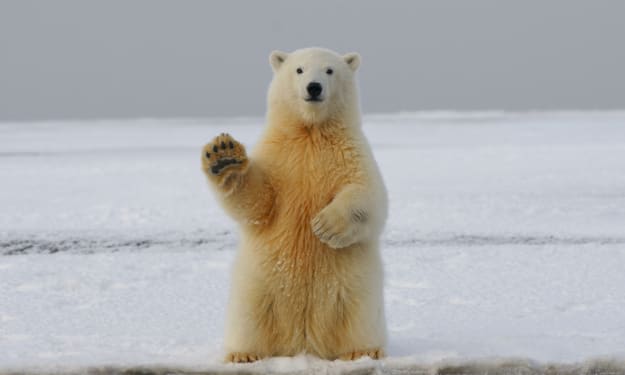"Pangolins: The Silent Victims of Illegal Trade".
The fact is that the little-known pangolin is the world’s most poached and trafficked animal.

Introduction:
In the quiet corners of the world's forests and savannas, a little-known creature navigates the shadows, evading the spotlight of public awareness. The pangolin, often referred to as the "scaly anteater," is a creature of wonder, adorned with overlapping scales that serve as armor against predators. However, behind this seemingly innocuous exterior lies a tragic reality—the pangolin is the world's most poached and trafficked animal. In this exploration, we unveil the plight of the pangolin, shedding light on the ecological significance of these enigmatic creatures, the factors driving their illicit trade, and the urgent need for conservation efforts to save them from the brink of extinction.
Chapter 1: The Enigma of Pangolins.
Pangolins belong to the order Pholidota and are represented by eight distinct species, inhabiting regions of Africa and Asia. Covered in scales made of keratin—the same substance that forms human hair and nails—pangolins are the only mammals with such a unique defense mechanism. When threatened, they curl into a ball, presenting an impenetrable shield of scales to potential predators.
Despite their captivating adaptations, pangolins have remained relatively obscure, contributing to their vulnerability. The scales, once a survival advantage, have become a curse, as they fuel an illicit trade that threatens the very existence of these remarkable creatures.
Chapter 2: The Unseen Victims of Illegal Trade.
Pangolins are relentlessly hunted for their scales, meat, and other body parts due to deeply rooted cultural beliefs and a growing demand for their products in traditional Asian medicine and exotic cuisine. The demand for pangolin scales is primarily driven by the belief that they possess medicinal properties, despite a lack of scientific evidence to support such claims.
The trade-in pangolin meat has also surged, with these creatures being sold in both local and international markets. The combination of high demand, low public awareness, and limited legal protection has created a perfect storm for the pangolin, making it the primary target of poachers and traffickers.
Chapter 3: A Crisis of Global Proportions.
The pangolin's status as the most poached and trafficked animal is underscored by staggering numbers. According to estimates, more than a million pangolins have been trafficked over the past decade, representing a crisis of global proportions. All eight species of pangolins are listed on the International Union for Conservation of Nature's (IUCN) Red List, with several classified as critically endangered.
The illegal trade is fueled by sophisticated criminal networks that exploit regulatory loopholes, weak law enforcement, and porous borders. Pangolins are often smuggled across continents, making it challenging to monitor and curb the illicit trade effectively.
Chapter 4: Ecological Significance and Ripple Effects.
Beyond the direct threat to pangolins, their decimation has profound implications for ecosystems. Pangolins play a crucial role in pest control by preying on ants and termites, helping to regulate insect populations. The loss of pangolins disrupts the delicate balance of ecosystems, leading to potential increases in pest populations and impacting vegetation.
Moreover, the decline of pangolins has a cascading effect on other species within their ecosystems. As predators, pangolins contribute to maintaining biodiversity by controlling the populations of their prey. The extinction of pangolins could set off a chain reaction, affecting various species and destabilizing entire ecosystems.
Chapter 5: Conservation Efforts and Hope for the Future.
Conservation organizations, governments, and wildlife enthusiasts worldwide are rallying to address the pangolin crisis. Efforts include strengthening anti-poaching measures, increasing penalties for wildlife trafficking, and raising public awareness about the ecological importance of pangolins. Several countries have also implemented stricter regulations to curb illegal trade, and international collaborations aim to combat trafficking networks.
Captive breeding programs have been initiated to rehabilitate and release pangolins back into the wild. However, the challenges are immense, and a concerted global effort is required to secure the future of pangolins.
Conclusion:
The pangolin's designation as the world's most poached and trafficked animal is a stark reminder of the urgent need for collective action to protect these unique creatures and the ecosystems they inhabit. As the demand for their scales and meat persists, so does the threat to their existence. Conservation efforts, legislative measures, and public awareness campaigns must converge to address the complex web of factors driving the pangolin toward extinction.
The fate of the pangolin is a litmus test for humanity's commitment to preserving biodiversity and recognizing the intrinsic value of every species in the intricate tapestry of life. The plight of the pangolin is a call to action, urging us to stand as stewards of the natural world, ensuring that the scales of justice tip in favor of these remarkable creatures rather than against them.





Comments
There are no comments for this story
Be the first to respond and start the conversation.